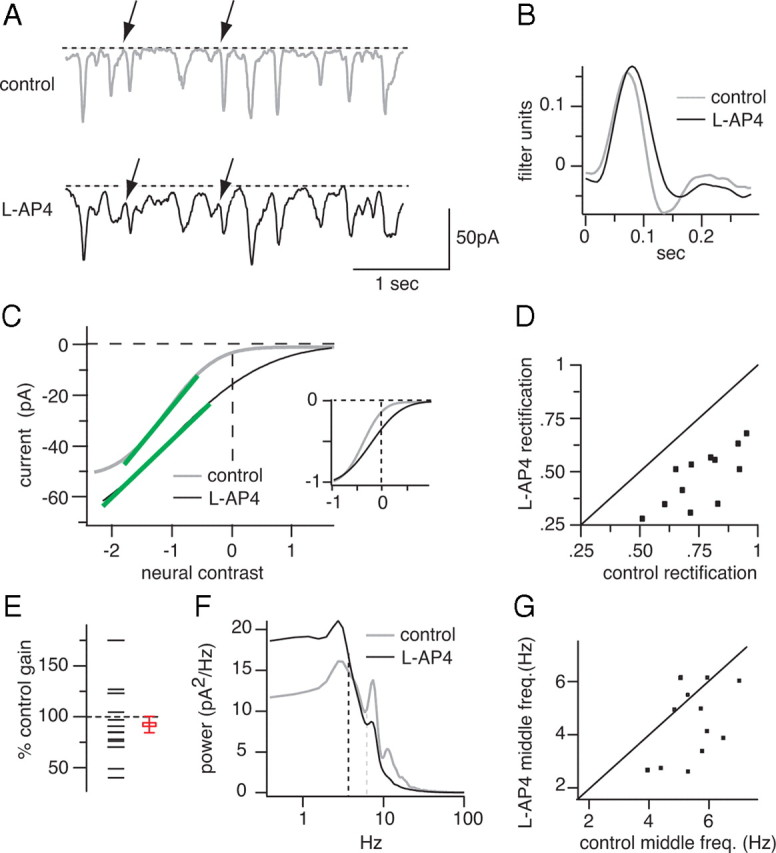Figure 5.

Blocking the ON bipolar cell reduces rectification, gain, and the middle frequency of excitatory currents from OFF ganglion cells. A, Excitatory currents evoked by white noise from an OFF ganglion cell in control conditions and with l-AP4. Some current deflections fail to return to the baseline when l-AP4 is applied, consistent with a decrease in rectification (arrows). l-AP4 elongates current deflections. B, l-AP4 elongated the impulse response, consistent with elongated current deflections in A. C, Static nonlinearities from the same cell. The slope of the linear portion decreases, indicating a gain decrease (green lines). The inset shows static nonlinearities scaled to match current and contrast ranges. l-AP4 straightened the static nonlinearity and reduced rectification. D, Plot of rectification index in l-AP4 against rectification index in control conditions; each data point is a cell. All data points lie below the diagonal; thus, l-AP4 reduced rectification in all cells (2 OFF β, 10 G5). E, l-AP4 reduced gain in most cells. In this and subsequent figures, the open square and error bar shows the mean and SEM. F, Power spectra of excitatory currents: l-AP4 reduced power at high frequencies and increased power at low frequencies. Frequency response was measured by finding a middle frequency that had equal power above and below (dashed vertical lines). G, A plot of middle frequency with l-AP4 against middle frequency in control conditions. Most cells lie below the diagonal, indicating a decrease in middle frequency.
